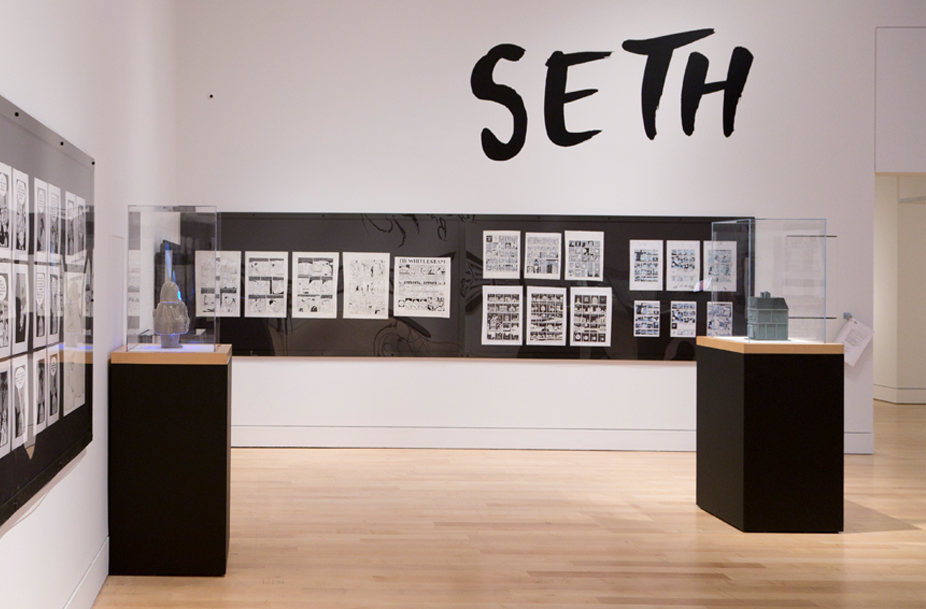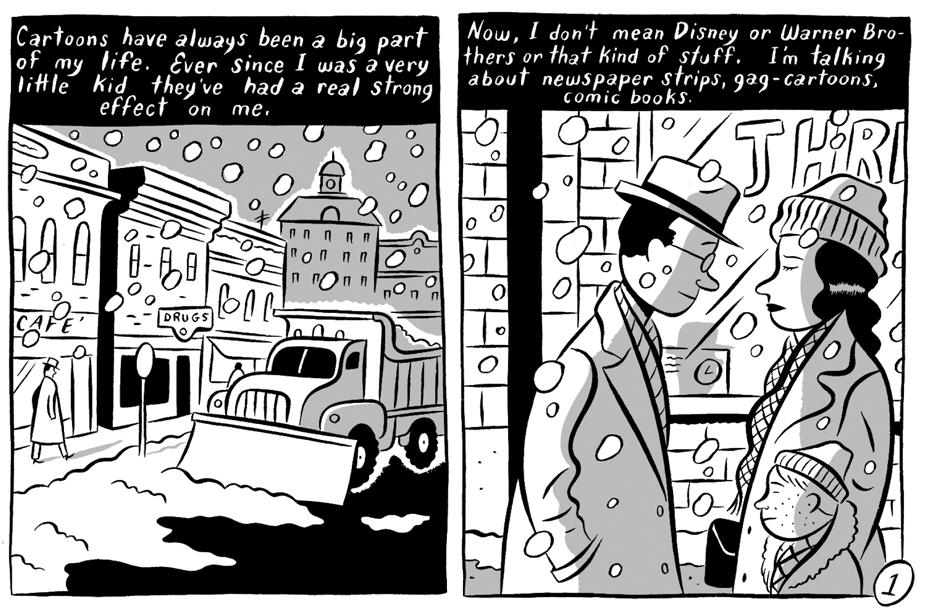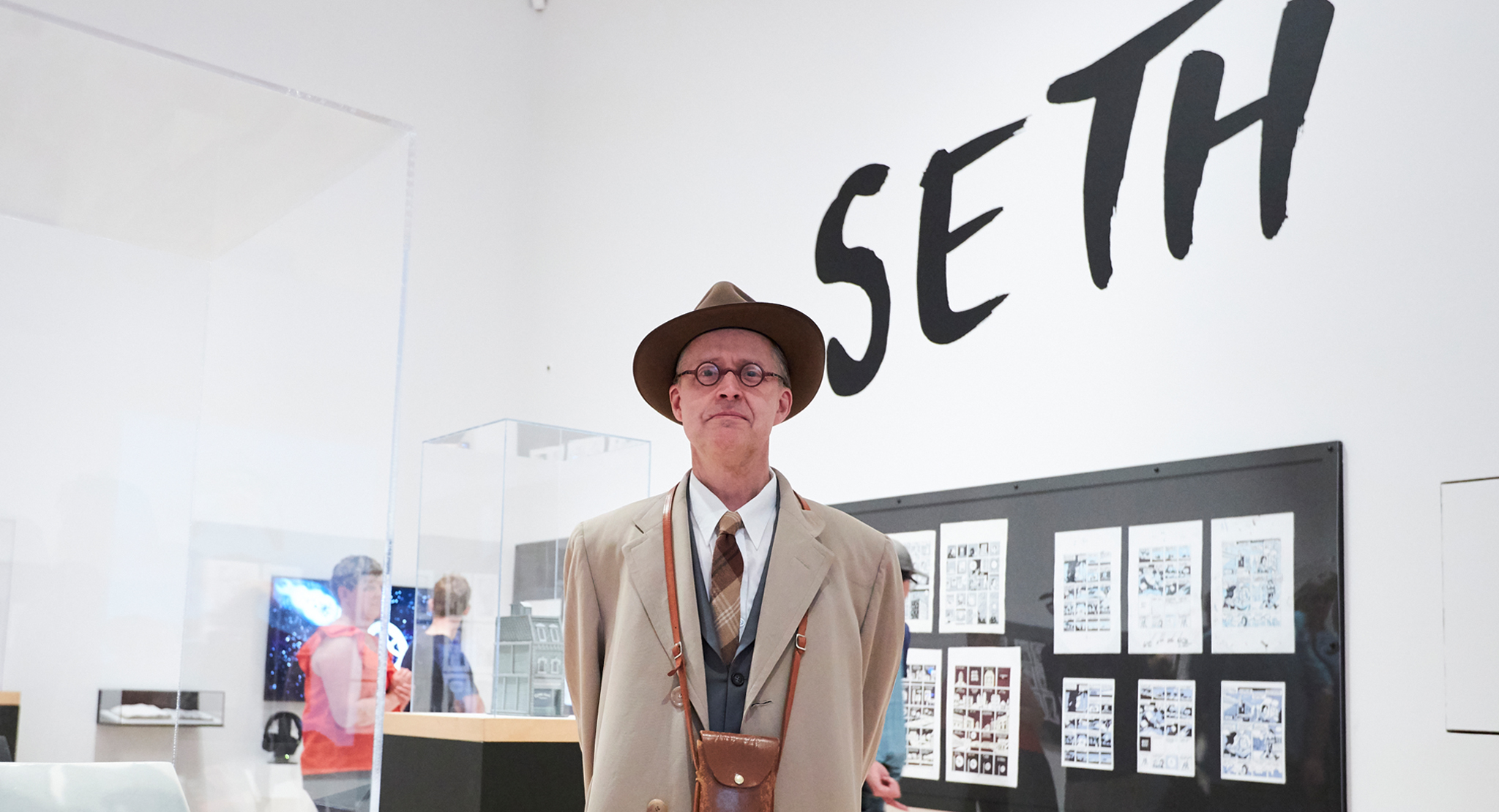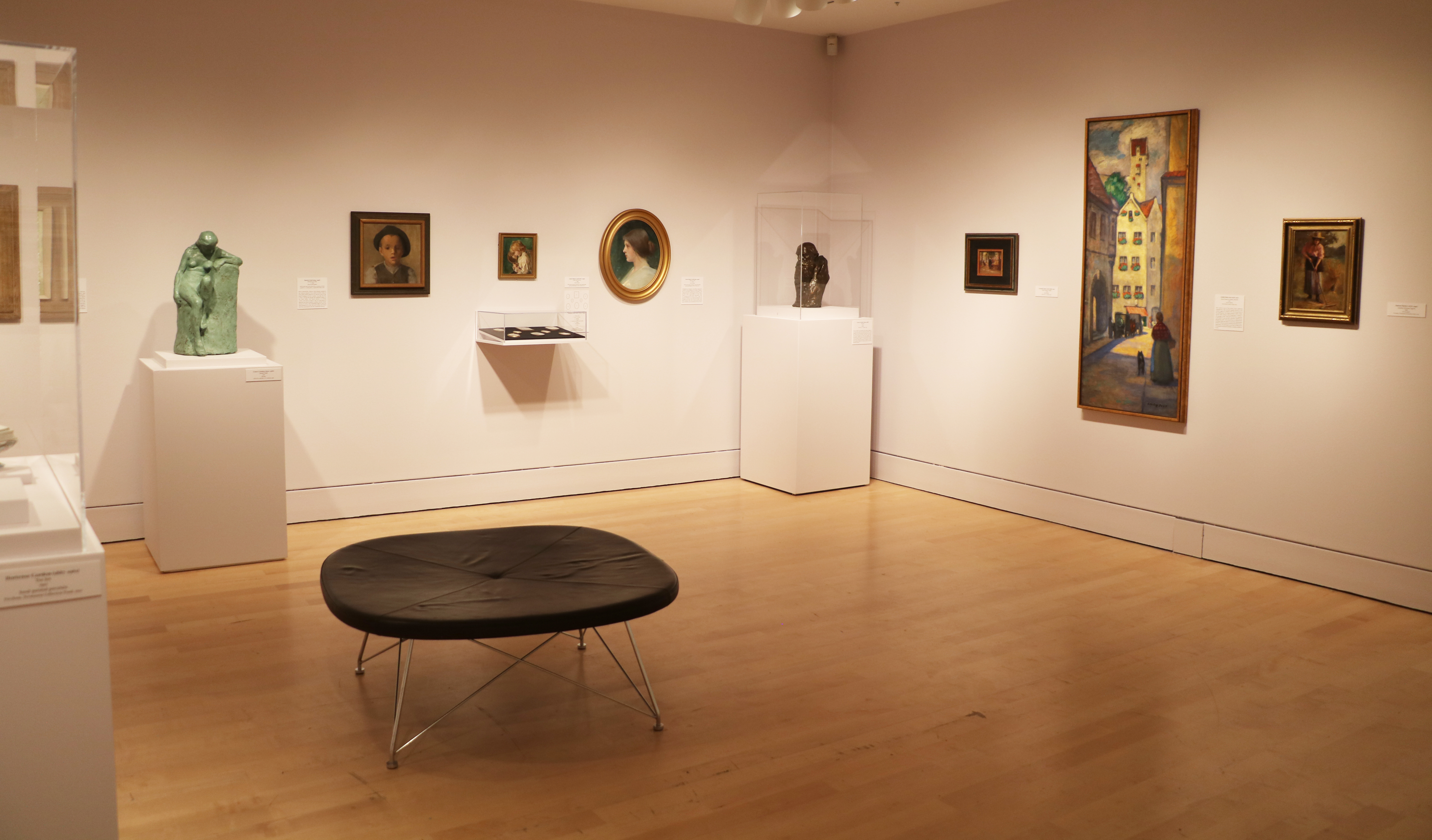Up on our gallery walls until January 5, THIS IS SERIOUS: Canadian Indie Comics continues to inspire us here at the AGH, as we keep finding new favourite works among the wide range on display. With 650 pieces by 47 artists, it is a huge exhibition with so much to offer visitors each time they walk through our doors. So, where do you start?
The exhibition spreads itself across much of our Gallery Level 1 Special Exhibition space. At its centre lies the “Big Four” room, prominently featuring the works of comic artists Chester Brown, Fiona Smyth, Seth, and Julie Doucet. Describing these artists’ importance, co-curator (and accomplished graphic novelist) Joe Ollmann notes that they are “four of the biggest cartoonists, not just in Canada, but in the world.”[1]
Today’s Exhibition Showcase explores one of these four major artists—Seth.
Born and raised throughout rural Southern Ontario, Seth—whose birth name is Gregory Gallant—adopted his pen name while studying at the Ontario College of Art in the early 1980s.[2] Gaining notoriety under this name with his still-ongoing Palooka-Ville comics series, Seth’s regional fame grew throughout the 1990s, positioning him as one third of the “Toronto Three.”[3] American literary author and critic M. Keith Booker’s Encyclopedia of Comic Books and Graphic Novels identifies this group as Seth, co-exhibition artist Chester Brown, and American cartoonist Joe Matt, all of whom focus heavily on autobiographical storytelling in their most popular work.[4] Building on this success, Seth shifted into award-winning efforts with It’s A Good Life, If You Don’t Weaken (1994–96) and Clyde Fans (1997–2017), making his name now synonymous with indie comics not only nationally, but worldwide.
Throughout his career, Seth has focused on stories of everyday life, ranging from explorations of mundane conversations with friends to episodes of city violence.[5] Palooka-Ville, a series that now spans over a quarter century, features a range of characters seeking meaning in a lost past. These characters often resemble the man himself, donning the same formal, early-century attire the artist is known to wear. The nostalgia extends past wardrobe, however, into Seth’s slow, meticulous storytelling and world-building of settings free from the trappings of everyday modern life.
Beyond the meticulous descriptions of Seth’s settings within the comics themselves, he has also brought his worlds to life in three dimensions with the Seth’s Dominion buildings, one of which can be found in THIS IS SERIOUS. These sculptures are tall, but insecure—leaning, unsteady, and made of paper. Each model helps make up a town that feels right at home in early-century small-town Ontario, reminiscent of the worlds of Canadian literary giants Stephen Leacock and Sinclair Ross. Indeed, Ross’s setting description in As For Me and My House could fit perfectly to describe Seth’s town: “The false fronts that other times stand up flat and vacant are buckled down in desperation for their lives. They lean a little forward, better to hold their ground against the onslaughts of the wind. Some of them cower before the flail of dust and sand.”[6]

While these buildings are as much characters in Seth’s work as the occupants within them, it is important to note the humans navigating this space. Prevalent throughout Seth’s work is his own self-insert—a well-dressed man in full suit, hat, and spectacles. This character often mirrors the act of writing, spending entire pages quietly observing, walking around the town, then indulging in either a long monologue or conversation. This character fits in, too, not only in attire but by being drawn in the same muted, often-monochromatic palette as the world around him. The author thus blends into this fantastical setting, lost to time, and blurs the lines between fact and fiction. The comic’s elements—character, setting, and visuals—are united to create the story and its world.

It would be easy to point to Seth’s blurring of these lines as pushing the boundaries of his own nostalgic pursuit, but this unabashed fascination with the past also forces readers to consider our present. Of course, this is just a small sample of the decades-long career Seth has built to this point, as he continues to innovate in a range of media.
To see more of Seth’s work in person, along with the work of 46 other incredible artists, be sure to see THIS IS SERIOUS before it closes, on January 5, 2020.
[1]Graham Rockingham, “Graham Rockingham: Getting Serious about Comic Art through a New Exhibition at the Art Gallery of Hamilton,” Hamilton Spectator, July 4, 2019, accessed September 13, 2019, https://www.thespec.com/opinion-story/9479727-graham-rockingham-getting-serious-about-comic-art-through-a-new-exhibition-at-the-art-gallery-of-hamilton/.
[2]Eric Hoffman and Dominick Grace, Seth: Conversations (Jackson:University Press of Mississippi, 2016).
[3]M. Keith Booker, Encyclopedia of Comic Books and Graphic Novels (Santa Barbara: Greenwood, 2010).
[4]Ibid.
[5]Ibid.
[6]Sinclair Ross, As for Me and My House (New York: Reynal and Hitchcock, 1941).


